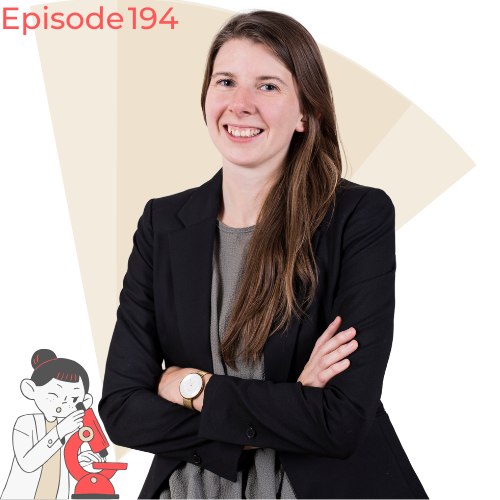What to Expect:
In this episode, Rebecca Pittkowski delves into her research on developing catalysts for green energy applications. Rebecca shares her journey from studying chemistry in Germany to conducting catalysis research at the Technical University of Denmark, and her work on enhancing the efficiency of chemical reactions used in sustainable energy applications.
About the Guest:
Rebecca Pittkowski
Rebecca Pittkowski is a PhD researcher at the Technical University of Denmark specializing in catalysis and green energy. Her work focuses on developing new catalysts to enhance the efficiency of chemical reactions used in sustainable energy applications. Rebecca’s research aims to contribute to the global transition to renewable energy sources.

🌟 Key Takeaways from This Episode:
- Catalysis for Green Energy: Developing catalysts to enhance the efficiency of chemical reactions in sustainable energy applications.
- Career Journey: From studying chemistry in Germany to conducting catalysis research in Denmark.
- Favorite Experiment: Investigating the properties of new catalysts for hydrogen production.
🔬 In This Episode, We Cover:
Rebecca’s Research :
Rebecca’s research focuses on developing catalysts to enhance the efficiency of chemical reactions used in sustainable energy applications. Her work aims to improve the production of hydrogen and other renewable energy sources by designing new catalysts with superior properties.
Rebecca’s Career Journey :
Rebecca’s academic journey began with a Bachelor’s in Chemistry in Germany. She pursued her passion for catalysis and green energy, leading her to her current role as a PhD researcher at the Technical University of Denmark, where she focuses on developing catalysts for sustainable energy applications.
Rebecca’s Favourite Research Experiment :
Rebecca’s favorite experiment involves investigating the properties of new catalysts for hydrogen production. By understanding how these catalysts function and how they can be improved, she aims to enhance the efficiency of hydrogen production, contributing to the development of sustainable energy solutions.
Life as a Scientist: Beyond the Lab
Rebecca values the collaborative nature of scientific research and enjoys engaging with the global scientific community. She is passionate about teaching and mentoring the next generation of scientists and values the opportunity to work on solutions for global energy challenges.
Rebecca’s 3 Wishes
- Increased funding for research: Rebecca wishes for more financial support to advance innovative research projects.
- Greater collaboration between researchers: She advocates for stronger partnerships to enhance knowledge sharing and collaborative efforts in research.
- Improved public understanding of scientific research: Rebecca emphasizes the importance of public awareness and support for scientific advancements.
Rebecca’s Time on @RealSci_Nano :
Rebecca will be taking over the RealSci_Nano Twitter account to share her research on catalysis and green energy. Followers can expect to learn about the innovative techniques and materials her work focuses on, as well as insights into the future of sustainable energy.
Join the Conversation
Follow & listen to “Under the Microscope” on Spotify, Apple Podcasts, Castbox, Amazon Music, Goodpods.
Got your own favourite podcast app? Follow the RSS link to find Under the Microscope.
Watch the video of all Under the Microscope episodes on The Science Talk’s YouTube channel. While you are at it, make sure to subscribe to our YouTube Channel.
Learn more about Under the Microscope – https://thesciencetalk.com/under-the-microscope/
Love what we do? Support us:
We also offer partnerships to scientists, research institutions, industry, funding bodies & societies.
Get in touch to start the conversation.
